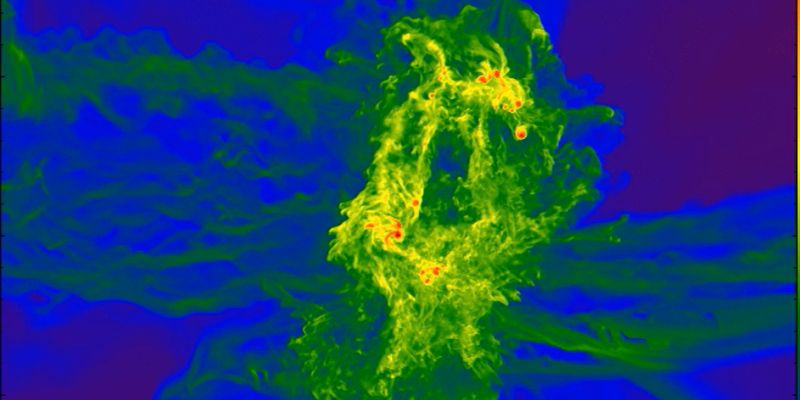Scientists discover how first quasars in universe formed
Versão portuguesa disponível aqui
The mystery of how the first quasars in the universe formed – something that has baffled scientists for nearly 20 years – has now been solved by a team of astrophysicists whose findings are published in Nature.
The existence of over 200 quasars powered by supermassive black holes less than a billion years after the Big Bang had remained one of the outstanding problems in astrophysics because it was never fully understood how they formed so early.
The team of experts led by Dr Daniel Whalen from the University of Portsmouth have found that the first quasars naturally formed in the violent, turbulent conditions of rare reservoirs of gas in the early universe.

Dr Whalen, from the University’s Institute of Cosmology and Gravitation, said: “This discovery is particularly exciting because it has overturned 20 years of thought on the origin of the first supermassive black holes in the universe.
“We find supermassive black holes at the centres of most massive galaxies today, which can be millions or billions of times the mass of the sun. But back in 2003 we began finding quasars – highly luminous, actively-accreting supermassive black holes that are like cosmic lighthouses in the early universe – that existed less than a billion years after the Big Bang. And no one understood how they formed by such early times.” […] Read more in the original article: University of Portsmouth.


Leave a Reply